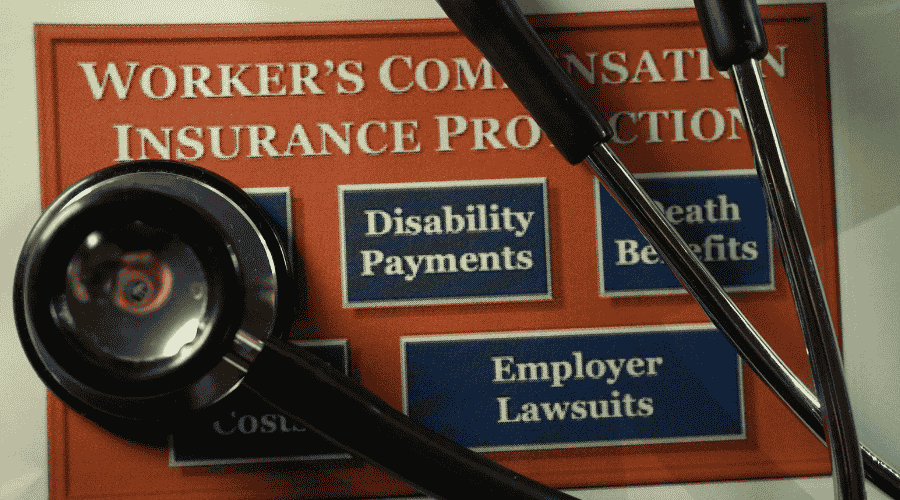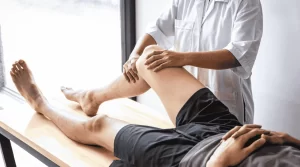
Chronic pain from a workplace injury can turn your daily life upside down, especially in a dynamic place like Hawaii. Whether you’re a barista in Kona, a dock worker in Hilo, or a retail employee in Lihue, persistent pain from a work-related incident can make even simple tasks feel impossible. If you’re wondering how to file a workers’ comp claim for chronic pain in Hawaii, you’ve come to the right place. At Vally Medical Group, we’ve guided countless Hawaii residents through the workers’ compensation process while helping them manage chronic pain. With our clinics in Kona, Hilo, and Lihue, we’re here to make the journey smoother for you.In this blog post, we’ll walk you through the steps to file a workers’ compensation claim for chronic pain in Hawaii. From reporting your injury to gathering medical evidence and avoiding common mistakes, we’ll equip you with the knowledge to secure the benefits you deserve. Let’s get started so you can focus on healing and rediscovering the joy of life in the Aloha State.
Understanding Workers’ Compensation in Hawaii
First, let’s cover the basics. Workers’ compensation in Hawaii is a state-required insurance program that supports employees injured or made ill by their jobs. It covers medical bills, lost wages, and rehabilitation costs, including for chronic pain caused by workplace injuries. Whether you’re dealing with shoulder pain from stocking shelves in Lihue or back pain from construction work in Kona, workers’ comp is designed to help.The challenge with chronic pain claims is proving the pain is work-related, as it often develops gradually. With proper documentation and medical support from a Hawaii pain clinic like Vally Medical Group, you can build a compelling case. Here’s how to navigate the process step by step.

Step 1: Notify Your Employer Promptly
The first step in filing a workers’ comp claim for chronic pain in Hawaii is to report your injury to your employer as soon as possible. Hawaii law gives you 90 days from the injury or when you first notice symptoms to inform your employer. For chronic pain, this might be when you realize your discomfort isn’t fading—say, after months of knee pain from standing all day at a Hilo fish market.When you report, be clear about how the injury occurred and its impact. For example, if you’re a landscaper in Kona with wrist pain from repetitive trimming, describe the tasks that led to it. Put the report in writing (via email or letter) and keep a copy. This documentation is crucial for your claim.Tip: Don’t wait, thinking the pain might resolve on its own. Chronic pain can worsen, and delayed reporting may weaken your case.
Step 2: Seek Medical Care Right Away
After reporting your injury, visit a doctor immediately. In Hawaii, workers’ comp lets you choose your initial physician, which is a big advantage. Seeing a chronic pain specialist at a Hawaii pain clinic, like Vally Medical Group in Kona, Hilo, or Lihue, can ensure an accurate diagnosis and a clear link to your workplace injury.During your appointment, explain your symptoms thoroughly—where the pain is, how severe it feels, and how it affects your life. For instance, if you’re a hotel worker in Lihue with neck pain from lifting luggage, note how it limits your movement. Your doctor may diagnose conditions like:
- Sciatica from repetitive bending
- Tendinitis from frequent tool use
- Chronic joint pain from a traumatic injury
These medical records are vital for your workers’ comp claim for chronic pain in Hawaii, as they tie your condition to your job.Why a Pain Clinic? At Vally Medical Group, we specialize in workers’ comp injuries and chronic pain treatment in Hawaii. Our advanced options, like nerve blocks and hyperbaric oxygen therapy, help you heal while we provide detailed documentation to support your claim.
Step 3: Submit the Workers’ Comp Claim
Once you’ve seen a doctor, your employer should file a WC-1 form (Employer’s Report of Industrial Injury) with their workers’ comp insurer and the Hawaii Department of Labor and Industrial Relations (DLIR) within seven working days of your report. Don’t leave it entirely to them—stay proactive to ensure the process moves forward.If your claim is denied or disputed, you may need to file a WC-5 form (Employee’s Claim for Workers’ Compensation Benefits) to formally request benefits. Include specifics like:
- When and how the injury happened
- How chronic pain affects your work
- Medical diagnoses and recommended treatments
Send the WC-5 to the DLIR’s Disability Compensation Division (DCD) online or by mail, and keep copies of all documents. Disputes are common with chronic pain claims, so preparation is key.
Commonly asked questions can be found here:
Step 4: Collect Strong Medical Evidence
Chronic pain isn’t always visible on scans, making it harder to prove to insurers. Solid medical evidence is essential to show your pain is work-related. Here’s how to build a strong case:
- Detailed Doctor’s Notes: Ask your physician to document how your chronic pain connects to your job. For example, if you’re a delivery driver in Hilo with elbow pain from heavy lifting, your doctor should explain the cause.
- Diagnostic Tests: Request MRIs, X-rays, or EMG tests to identify underlying issues. At Vally Medical Group, we use cutting-edge diagnostics to support workers’ comp claims in Hawaii.
- Treatment Records: Log all treatments, like physical therapy or injections. This shows you’re addressing the pain, which insurers value.
- Second Opinions: If the insurer challenges your claim, a second evaluation from another Hawaii pain clinic can reinforce your case.
Stay consistent with appointments and treatments to avoid gaps that could undermine your claim.
Treatment plan legal guidelines can be found here:
Step 5: Know Your Benefits
If your workers’ comp claim for chronic pain in Hawaii is approved, you may qualify for several benefits:
- Medical Coverage: Pays for doctor visits, pain clinic treatments, medications, and procedures. For instance, spinal cord stimulation at Vally Medical Group could be covered if medically necessary.
- Temporary Disability: Replaces part of your income if pain keeps you from working. Hawaii pays two-thirds of your average weekly wage, up to a cap.
- Permanent Disability: Provides compensation if your pain causes lasting limitations.
- Vocational Rehabilitation: Supports retraining if chronic pain prevents you from returning to your previous job.
Work with your doctor to ensure treatments align with workers’ comp guidelines. At Vally Medical Group, we coordinate with insurers to secure approvals for chronic pain treatment in Hawaii.
Step 6: Address Denials or Disputes
Chronic pain claims are sometimes denied because insurers question the work connection. If your claim is rejected, don’t lose hope—you can appeal through the DLIR.
- Request a Hearing: File for a hearing with the DCD within 20 days of the denial notice. A hearing officer will review your evidence.
- Consider Legal Help: A workers’ comp attorney in Hawaii, especially one familiar with Kona, Hilo, or Lihue cases, can bolster your appeal.
- Add More Evidence: Submit updated medical records or specialist opinions to counter the denial.
Our team at Vally Medical Group has helped clients overturn denials by providing clear documentation from our pain experts, ensuring you get the benefits you need.
Step 7: Prioritize Healing and Pain Relief
While managing your claim, focus on your recovery. Chronic pain can affect your physical and mental well-being, but the right treatment can help. At our Hawaii pain clinics in Kona, Hilo, and Lihue, we offer tailored solutions like:
- Nerve Blocks: To target specific pain areas.
- Hyperbaric Oxygen Therapy: To aid tissue healing.
- Physical Therapy: To improve strength and mobility.
- Counseling: To address the emotional toll of chronic pain.
By pairing effective treatment with a strong workers’ comp claim, you’re paving the way for a better quality of life.
Mistakes to Avoid
Steer clear of these common errors to strengthen your claim:
- Delaying Reports: Waiting to notify your employer or see a doctor can hurt your case.
- Missing Appointments: Skipping visits suggests your pain isn’t serious.
- Overstating Symptoms: Be truthful—exaggeration can damage credibility.
- Lack of Records: Save all emails, forms, and medical notes.
Why Trust Vally Medical Group for Your Claim?
Filing a workers’ comp claim for chronic pain in Hawaii is easier with a dedicated medical partner. At Vally Medical Group, we’re not just a pain clinic—we’re your ally. With clinics in Kona, Hilo, and Lihue, our experienced team understands the unique needs of Hawaii’s workforce. We offer:
- Precise diagnostics to validate your claim.
- Personalized treatments to ease chronic pain.
- Direct support with insurers to simplify the process.
From joint pain to nerve damage, we’re committed to helping you heal and secure your benefits.

Start Your Journey Today
Chronic pain from a workplace injury doesn’t have to hold you back. By following these steps to file a workers’ comp claim for chronic pain in Hawaii, you can access the care and support you need. Begin by reporting your injury, visiting a trusted Hawaii pain clinic like Vally Medical Group, and building a robust claim with medical evidence.Ready to move forward? Contact Vally Medical Group to book an appointment in Kona, Hilo, or Lihue. Let us guide you through your workers’ comp claim and help you find relief from chronic pain with expertise and aloha. Here’s to your recovery!

